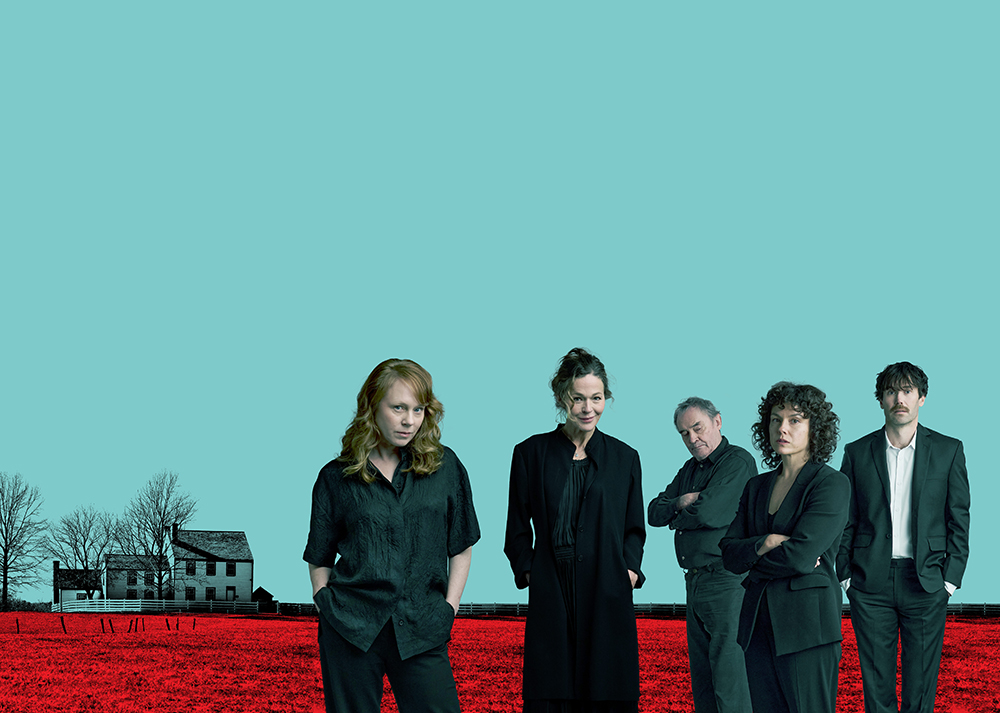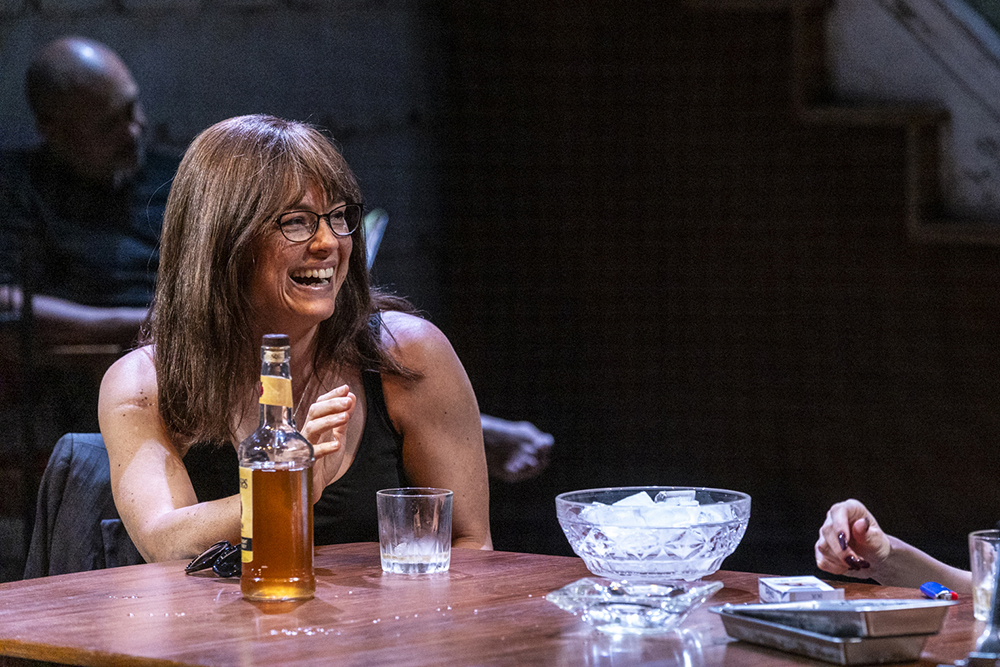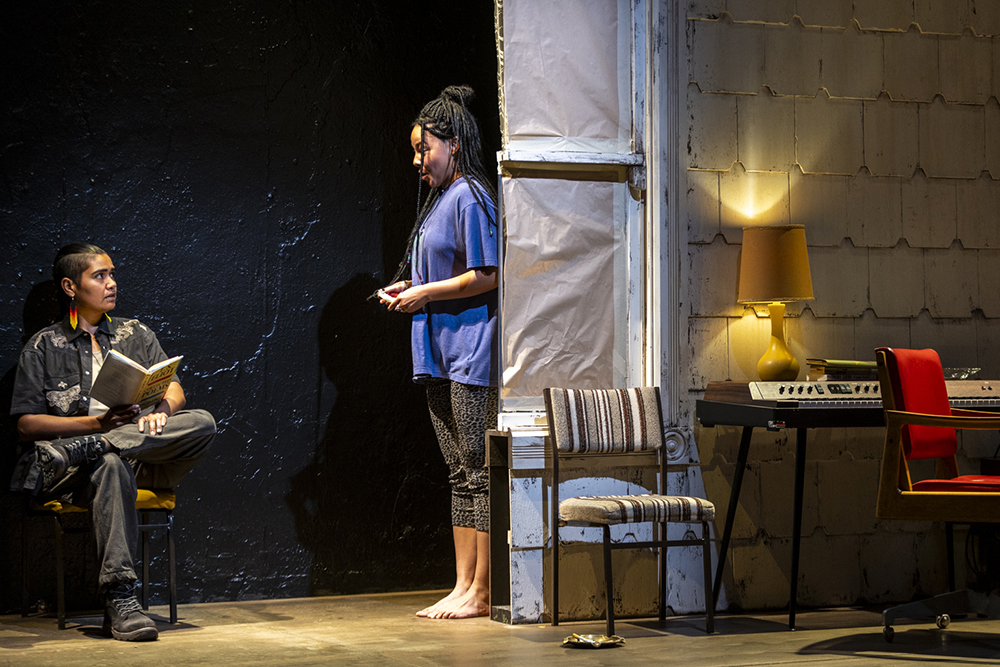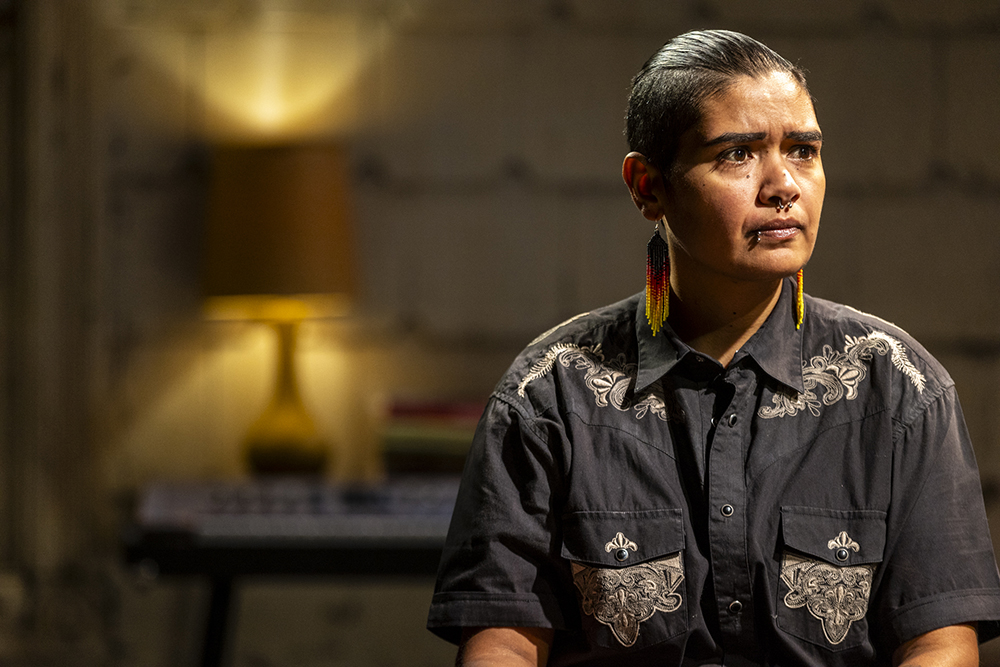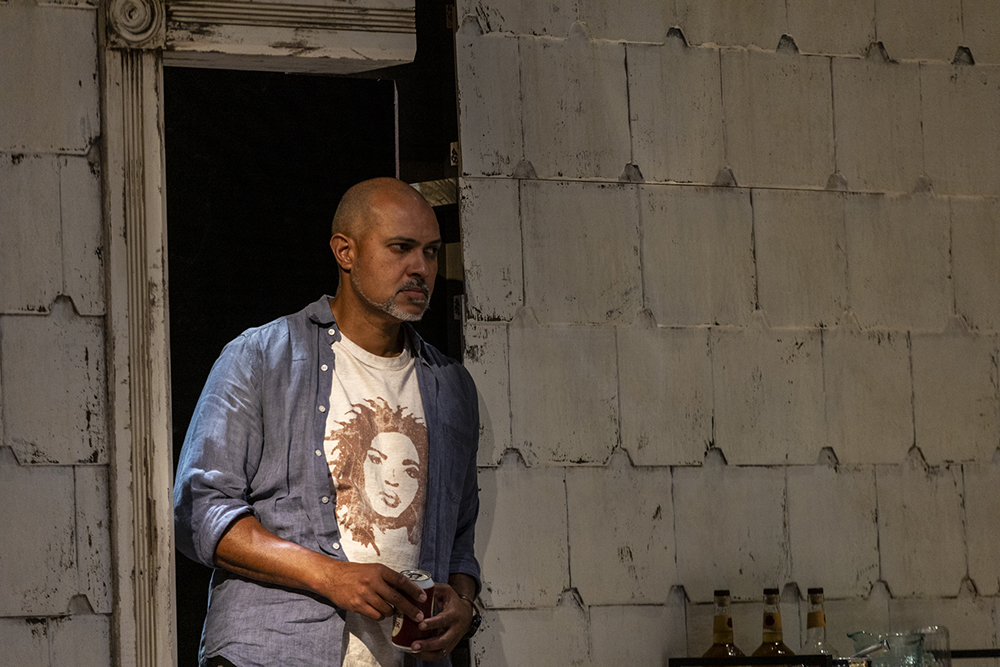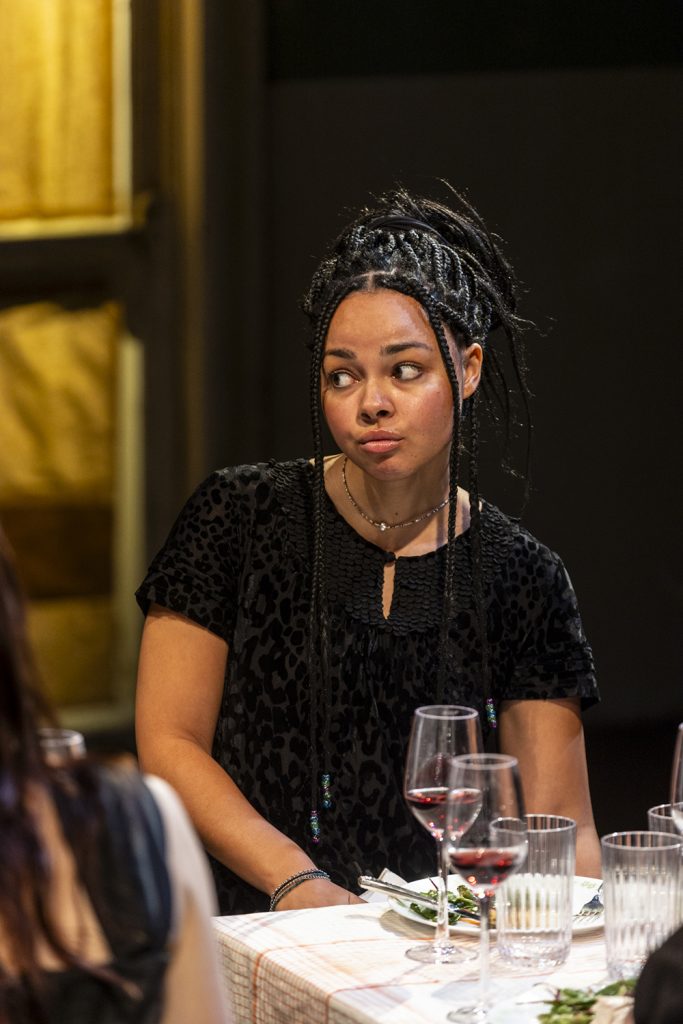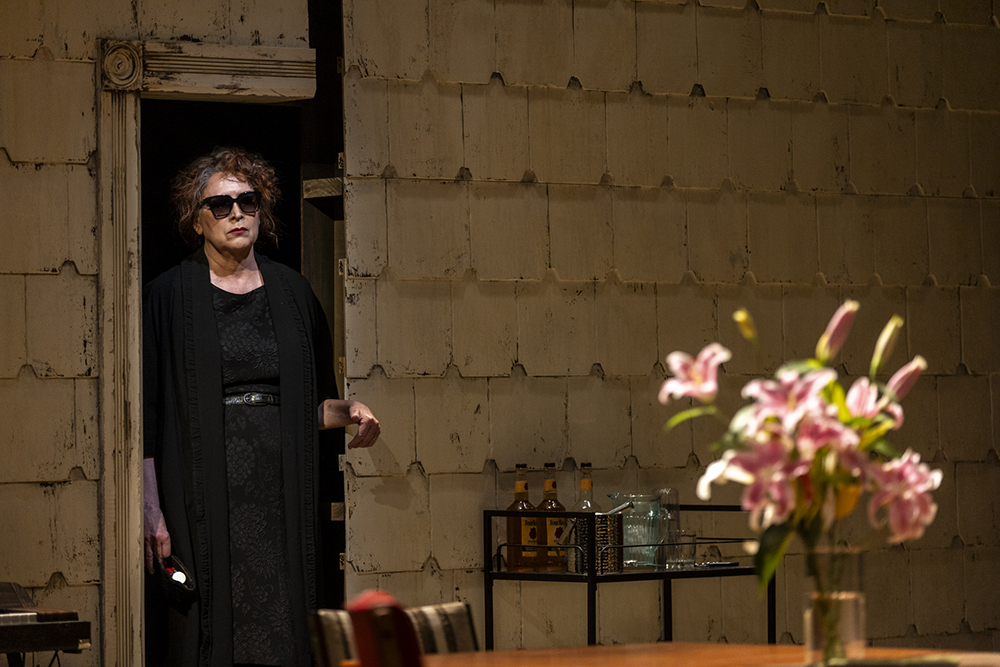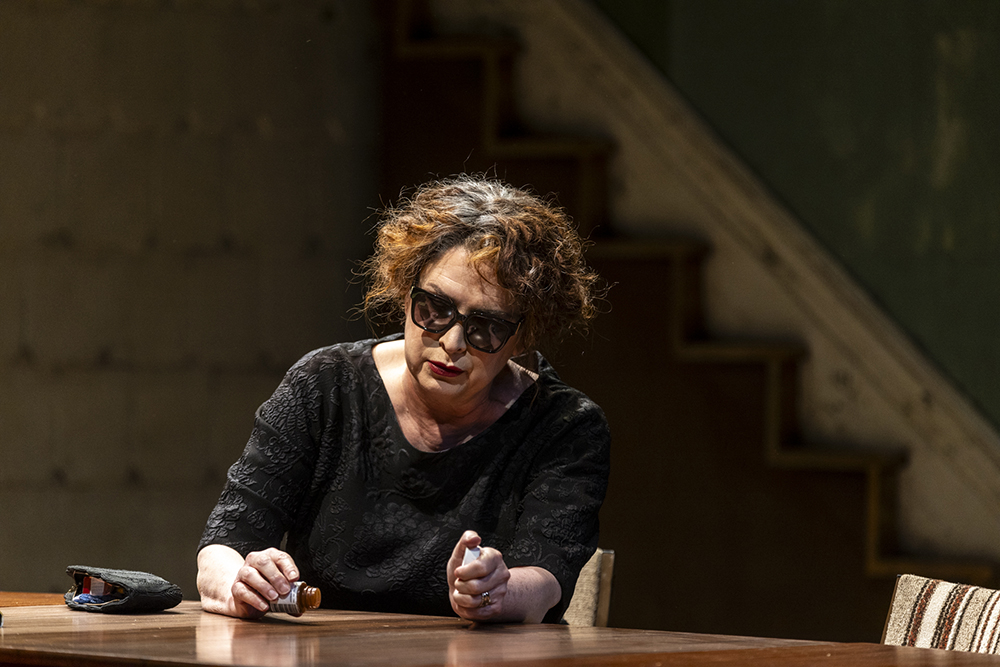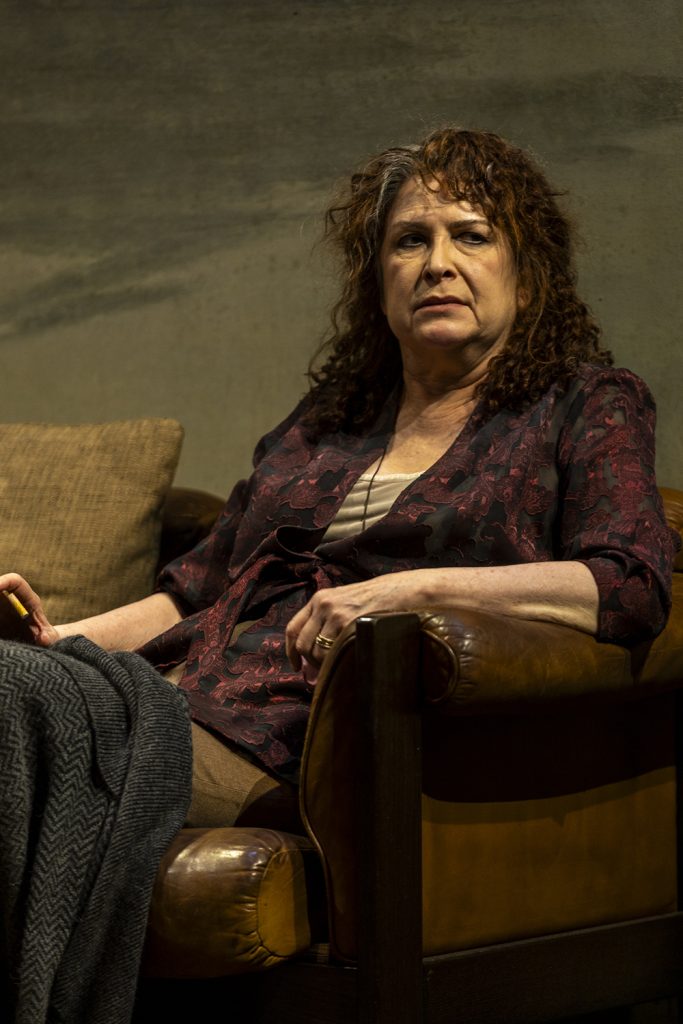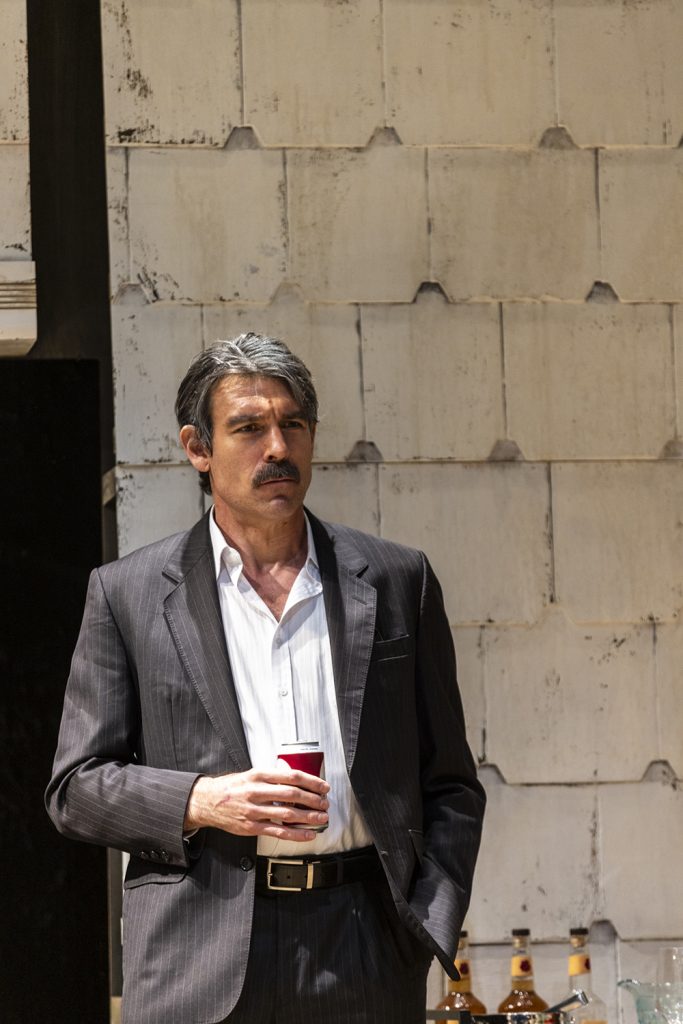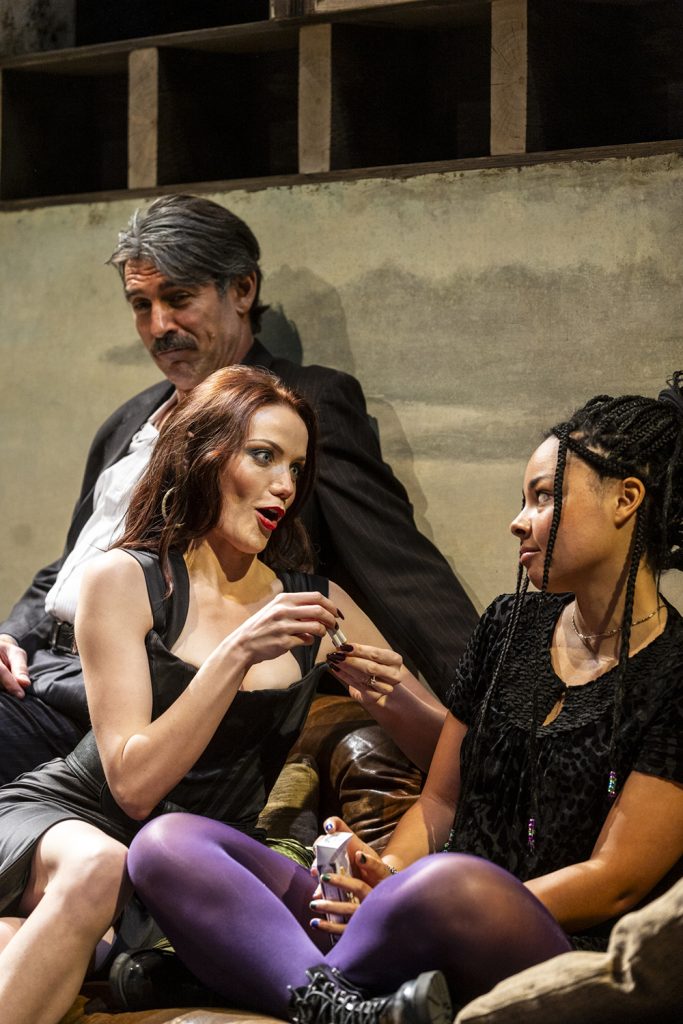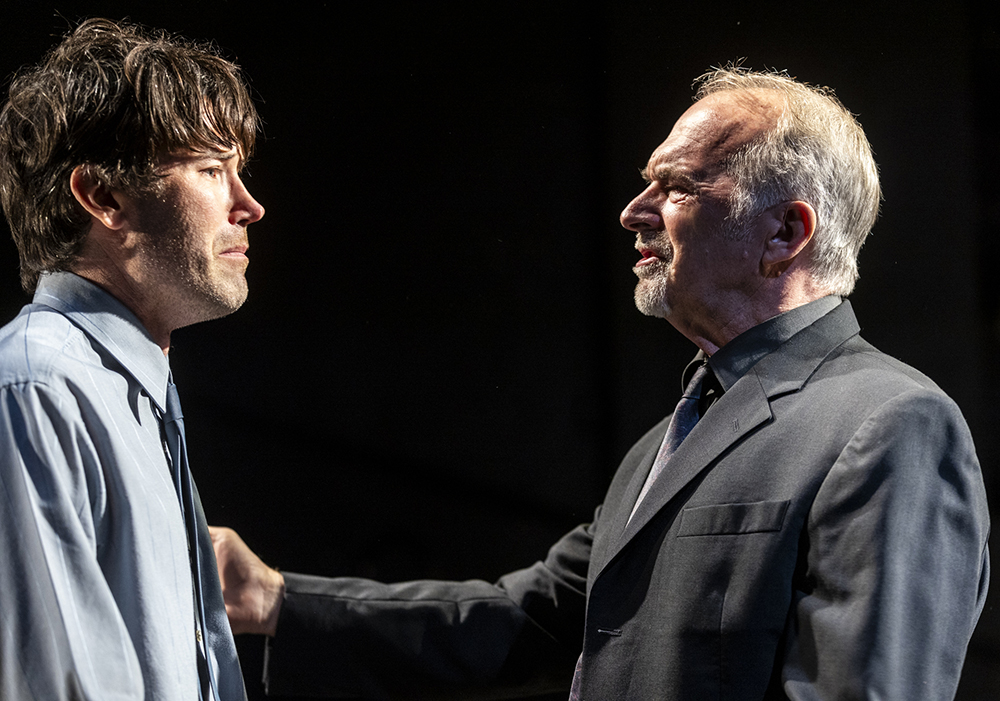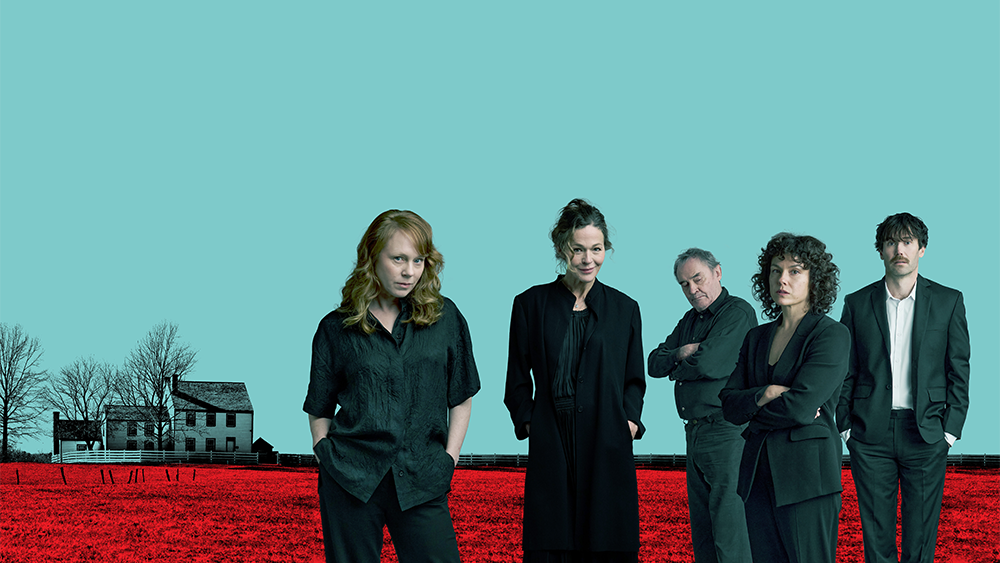
Review: August: Osage County at Heath Ledger Theatre
August: Osage County at Heath Ledger Theatre
Friday, March 7, 2025
There’s a long tradition in American theatre of powerful plays about totally fucked-up families. A Long Day’s Journey Into Night, Cat On A Hot Tin Roof, Death of a Salesman, Who’s Afraid of Virginia Woolf? and Fool For Love spring to mind. Tracy Letts’ August: Osage County sits right up there with them. The Black Swan/Belvoir Street co-production currently playing at the Heath Ledger Theatre packs a punch like only the greatest tragedies do. The full house standing ovation at last Friday night‘s performance was richly deserved. The stunned audience were taken on a roller coaster ride of devastating emotion and family dysfunction.
With a thirteen-member ensemble cast and running for three hours plus, AOC makes for a big play. Led by three powerful women, Pamela Rabe (the drug-addled, imperious matriarch Violet Weston), Hayley McElhinney (her eldest daughter Barbara), and Caroline Brazier (their sister/aunt, Matie Faye Aitken), the cast were uniformly excellent.
On pretty well every level, the relationships between the characters were fractured. Even when there appeared to be genuine intimacy and love, as the play unfolded, these were tragically broken. It was unrelenting. The actors artfully prised these cracks apart so that they became gaping fissures.
Although the three older female characters were messy, cruel, and completely self-centred, through the sheer force of their personalities, they lorded it over the other characters. None of the men could counter them, try as they might. Despite their sometimes reasonable and well-voiced rebuttals, they struggled not to be dominated. And as for the younger siblings and children, well, they couldn’t land a punch. They had to constantly fend off the onslaught; their every action and aspiration was met with scorn or ridicule, sometimes both at once.
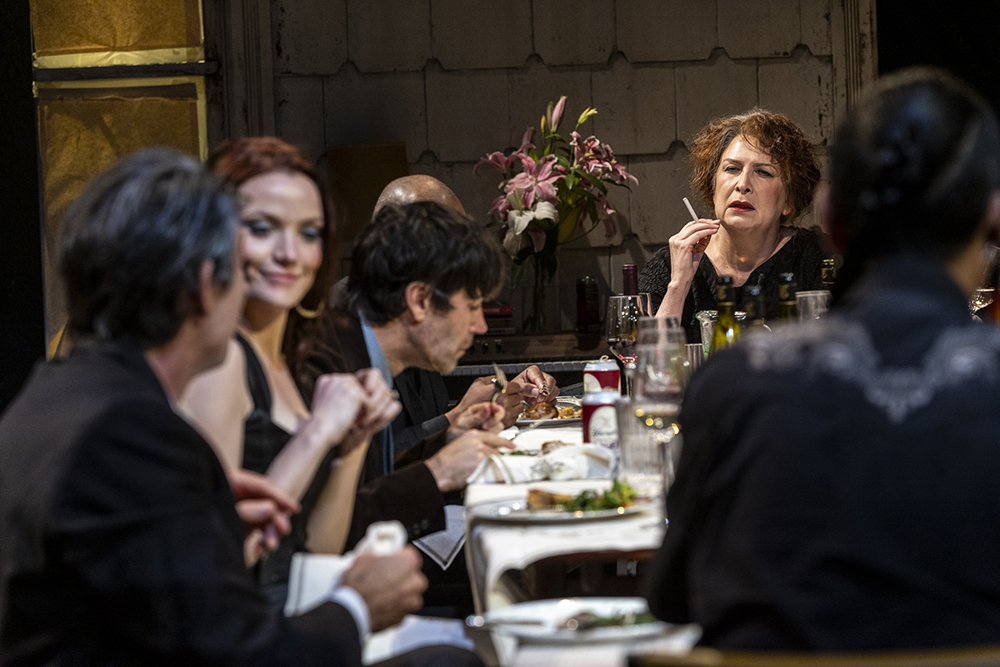
The one character removed from the maelstrom, albeit subjected to Violet’s constant racism, was the Native American cook/minder Bee Cruse (Johnna Monevarta). As she only came into the family’s orbit in the prologue to Act I, she made for a credibly independent witness and commentator, effectively the audience’s go-between. It was apt that, in her own voice, Monevarta delivered the welcome to country that prefaced the show and also that this segued straight into the opening speech by the patriarch, a fallen poet, Beverly Weston (Geoff Kelso).
Bee embraced Beverly’s passion for T.S. Eliot, often reading his collected poems at the side of the stage as the drama unfolded around her. This meant that she was able to tail Beverly’s initial quote from Eliot’s The Hollow Men, ‘Life is very long,’ with her own from The Waste Land, ‘This is how the world ends…’ to close the play. The unstated rejoinder to that line ‘… not with a bang but a whimper’ was implicitly enacted by a finally destroyed Violet cowering and sobbing at her feet.
Each hour-long act built steadily in momentum. Act I was the slowest (for some, too slow) but had a big task: introduce all of the characters and build the backstory. Act II was a devastating family dinner—a candidate for the most devastating family dinner ever presented on the stage. Up there with the feast scene in Titus Andronicus, unlike Shakespeare’s sensational debut, the parents here deliberately, though only metaphorically, ate their children. In Act III the family fault lines were pulled apart, reconfigured, then pulled apart again.
It’s rare for an audience to gasp loudly in horror at what they are seeing on stage, but there were many such moments at the Heath Ledger Friday night. Little wonder it earned a standing ovation—the audience were completely drawn in. The only flaw in the production was the occasional lapse of accent, a note of strine slipping in on a few lines.
The co-production between Black Swan and Belvoir Street saw an even mix of Perth and Sydney-based actors. It was slightly weighted towards Sydney, with some of the Perth cast—notably Brazier, McElhinney, and Kelso—also having a strong profile in the east. Belvoir Street AD, Eamon Flack’s direction was taut. He kept the pace just shy of breakneck.
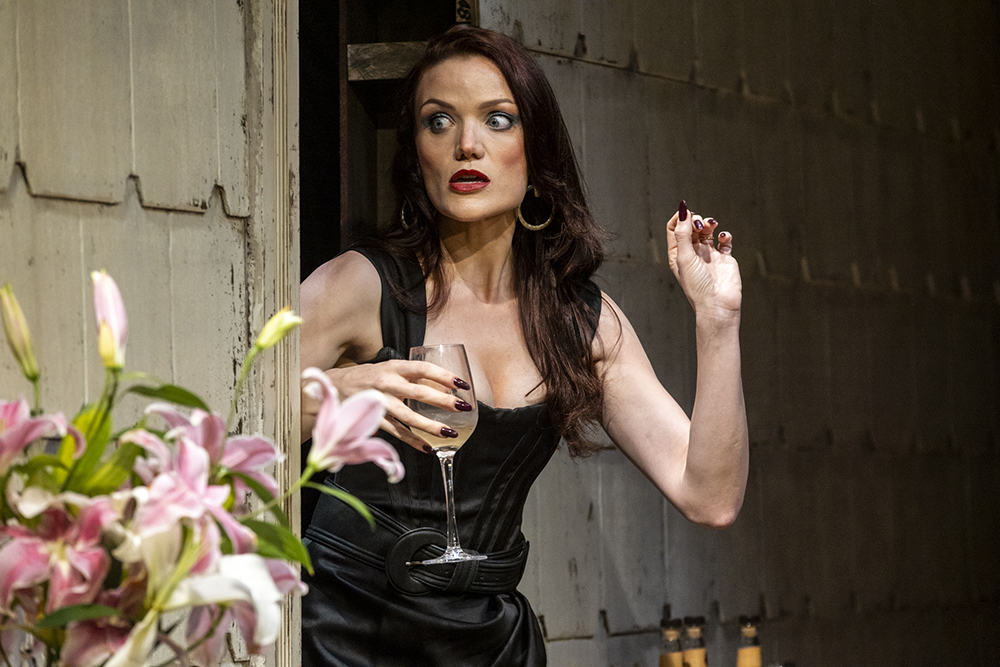
Ella Butler’s costume design had the right worn-out look. Most of the clothes came from second-hand shops and looked like they’d be thoroughly worn in and out, while Bob Cousin’s set design was the perfect deconstruction of a dilapidated Oklahoma farmhouse. Like a distressed colour-field painting of a pulled-apart house, it had a slate-roof wall, papered-up windows, and the outline of a stairway to nowhere.
Morgan Moroney’s lighting and Rachael Dease’s sound were perfect in their sublime impact and almost invisibility. They set the ideal ambience without drawing attention to themselves, always the sign of great theatre art.
August: Osage County premiered in Chicago in 2007 by Steppenwolf Theatre Company, the troupe Tracy Letts had performed with for some twenty years. The production quickly transferred to Broadway, where it had a run of 648 performances and 18 previews. In 2008 it won five Tony awards (nominated for seven) and earned Letts a Pulitzer Prize for Drama. It has since been translated into multiple languages and been presented all around the world. It had its Australian premiere in 2009 for the Melbourne Theatre Company.
In years to come, Letts may well take his place with Eugene O’Neill, Tennessee Williams, Arthur Miller, Edward Albee, and Sam Shepard in the pantheon of great American playwrights. If so, August: Osage County will probably be listed as his masterwork.
There is another tradition in American theatre and film where, when the characters are at a complete loss to fathom what’s going on, they resort to Irving Berlin’s God Bless America. Think: the climactic scene in the film The Deer Hunter. There is a moment deep in Act III of OAC where Barbara plays the song on the stereo.
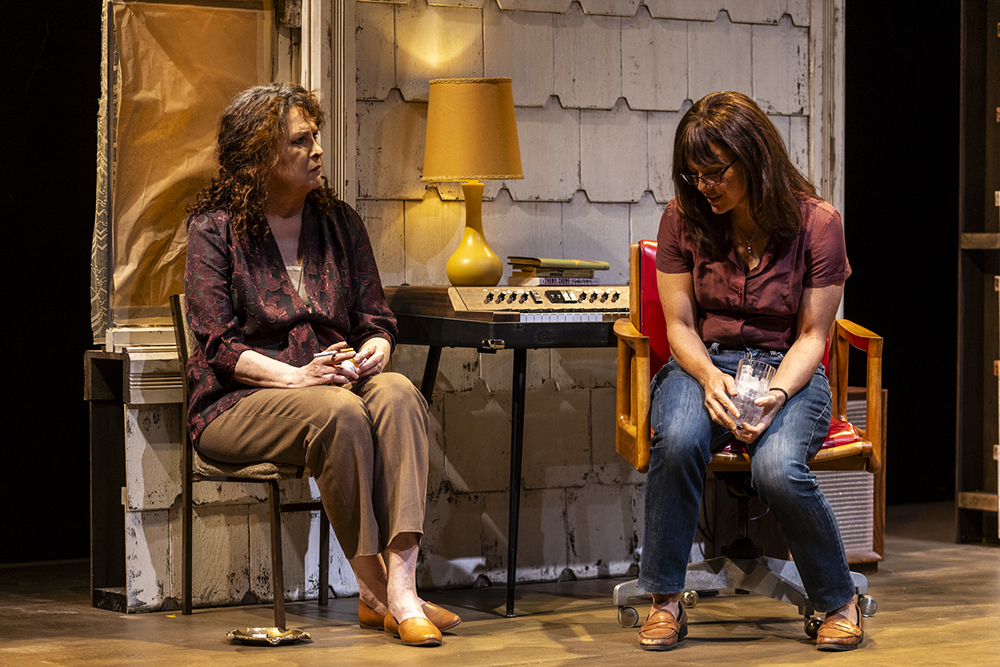
A year ago this scene may have struck an Australian audience as kitsch or cringingly patriotic. In March 2025, the effect was horrifying, an extra twist of the knife. It always encapsulated the deeper theme at work within the play: the very dark and quite mad side of the good ol’ U.S. of A.
The play may be twenty years old, but through this theme, it speaks to the heart of what we are all seeing now playing out on the world stage. That added a further and final twist to this production. The Artistic Directors of Belvoir and Black Swan could not have foreseen quite how prescient a choice this play was when they programmed it into their Perth Festival season. It’s as though it were fated.
IAN LILBURNE
